Update on ‘Life’ in Y5
This week has seen the launch of our new Big Topic, ‘Life’.
It’s an exciting week for us as it comes with a great (very informative) class assembly and a trip to Leeds Museum on Friday morning. We started our topic with an incredible journey from the beginning of Earth, 4.6 billion years ago, to this very day.
As a class, we created a giant timeline in our classroom and then wrote some fantastic, detailed recounts on it.
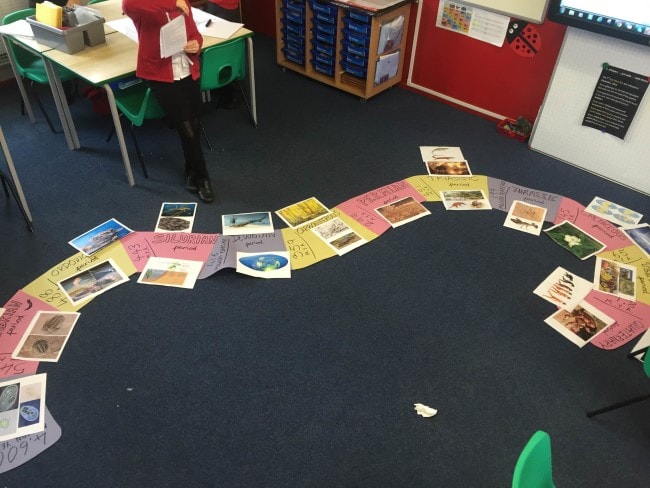
We’ll be using our ‘Life’ knowledge in English over the next few weeks to write informative texts on various animals: old, new and some just plain old fictitious. Help at home by looking through animal information books, magazines and websites for some vocabulary the children could learn and use in their own writing.
In Maths, we’re focussing on fractions, percentages and decimals. We need to know the relationship between these three areas of Maths and be able to fully understand what they mean and how to use them. At home, help by drawing images of fractions and then identify the equivalent percentage and decimal.
Phonics mornings
This week, we’ll be holding our second of three phonics sessions.
The children are now beginning to learn long vowel phonemes and digraphs (two letters making one sound, like ‘sh’ and ‘th’) and to read and write sentences and longer words.
We expect all parents / carers to come along and see how much the children have learnt and find out ways you can support your child at home.
Maths learning in Reception
In our maths learning this week, we’ll learn about shape and pattern.
We’ll look at shape and pattern around us and in particular shape and pattern found in nature. We’ll look at snowflakes and ice and the patterns and shapes found in tree trunks, sticks and branches.
Number and calculating is built upon patterns; for example, recognising sequences of numbers or the shape of five on a dice with spots, without counting each dot.
As well as noticing shapes and patterns, children need to talk about them in order to develop the language needed to describe the shapes and patterns they see.
The following is a list of vocabulary the children will experience in Reception:
shape, flat, curved, straight, round, solid, corner, sort, cube, cuboid, cylinder, pyramid, sphere, cone, circle, triangle, square, rectangle, size, bigger, larger, smaller, pattern, repeating pattern, match.
A Science experiment
Here are some photos from when we tested different materials to see if they would be a good material to make an umbrella from. We found out that wood and plastic would keep us dry. However, we agreed that a wooden umbrella would be quite heavy to hold above your head! The class worked as scientists by making sure they treated each material the same by dropping 50 drops of water on them all. They recorded all their findings and analysed them afterwards. Mrs Maqbool and I were really impressed! Well done!
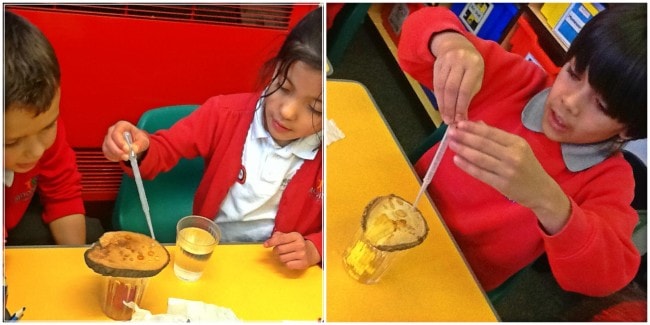
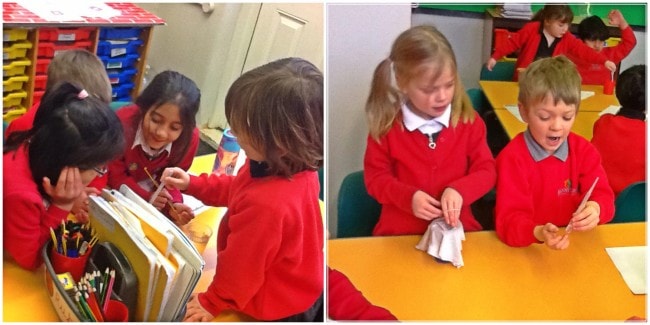
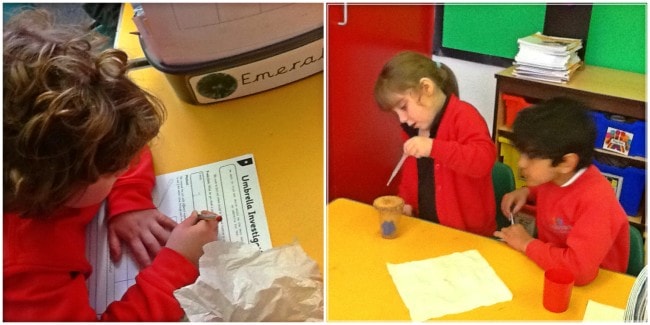
15 January 2016
This week’s spelling are all homophones. Homophones are words that sound the same but have different meanings and spellings e.g. new and knew. I’ve included some rough definitions as a guide. You might want to chat about other meanings with your child. For example, the word brake could be used as a noun (the brake of a car) and as a verb (I’m driving too fast so I’m going to brake).
| accept: to agree to receive something except: not including |
| affect: this has changed something effect: this will change something |
| not: changes the meaning to negative knot: usually string or rope tangled together |
| berry: a round juicy fruit bury: to put or hide underground |
| break: to damage something brake: something that stops a car or bike |
Friday 15 January
The homework this week is Practice Makes Perfect and is due in on Wednesday 20 January.
Practise your number bonds to 20 or Practise your number bonds to 10
We have been recalling number bonds to 20 by using what we already know about number bonds to 10.
7 + 3 =10 so…
17+3=20 or…
7+13=20
Some children still need to memorise number bonds to 10 before moving onto this. Therefore some children have been set slightly different homework this week.
15 January 2016
This week, the homework is creative and is due in on Wednesday 20 January.
I can show what my favourite animal is and can explain why I like it.
This homework will start off our big topic, Life, which focusses on living things and their habitats.
You could create an animal poster, interview, story, top trump card, model of the animal.
15 January 2016
Here are the spellings for this week:
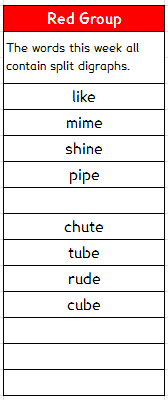
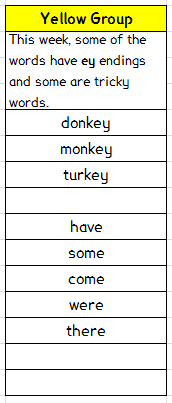
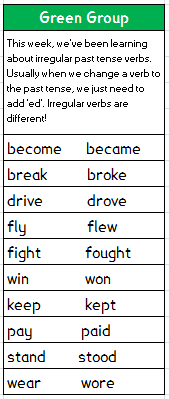
15 January 2016
This week, we have creative homework:
I can show what I know about shape.
We have spent the last two weeks learning all about shape. Children should reflect on this learning to show what they about this area of maths. Children might wish to:
- Identify shapes around them
- Demonstrate a particular skill (e.g symmetry) creatively
- Identify angles around them
- Explain/show the area of ‘shape’ maths they have found most interesting or feel most confident with
We also have Practice Makes Perfect homework:
I can use abstract nouns in sentences.
Children have a worksheet which helps them to practise using abstract nouns in sentences.
This homework is due on 20 January 2016.
This Week
Maths
For the past two weeks in maths, we’ve been looking at multiplication. We reviewed our multiplication tables last week and this week we’ve been applying our learning using the grid method.
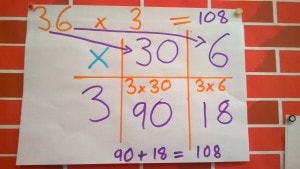
Why not challenge your child to solve a similar question to this one?
Next week, we start to look at fractions of shapes.
English
Our English this week has tied in with our class spellings – contractions. Contractions are two words that have been put together to form one word. They’re punctuated with an apostrophe to indicate missing letters. We’ve been using contractions in letters and dialogues.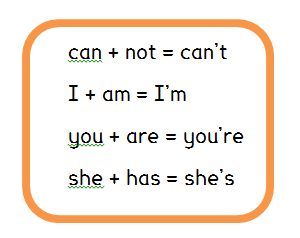 Why not ask your child to count the number of contractions that are in this post?
Why not ask your child to count the number of contractions that are in this post?
Next week, we start our learning on report writing which will link with our big topic, Life.
What’s the matter?
In this science mini topic we’ve looked at rocks, soils and fossils. We’ve been digging up the front playground, applying acid to rocks and investigating different types of fossils. Why not ask your child about how fossils are formed?